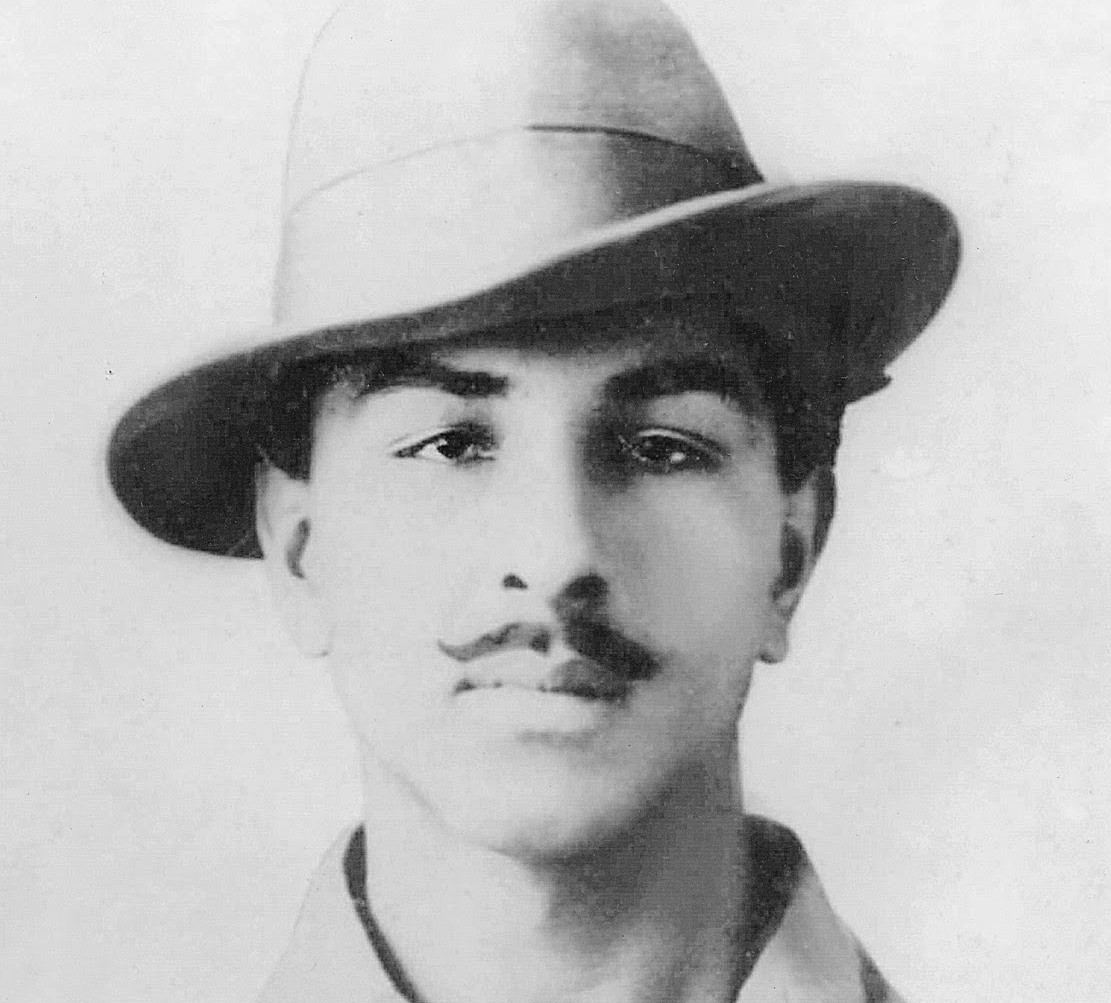At the age of 23, Bhagat Singh was hanged by the British as a revolutionary freedom fighter. He was hailed as a national hero in the Indian independence movement because of his early death. In the eyes of many, he was one of India’s first Marxists, affectionately known as Shaheed Bhagat Singh.
Bhagat Singh was the second son of Kishan Singh Sandhu and Vidya Vati, a Sikh family from Lyallpur, Punjab, India (now Pakistan). Indian independence was a cause close to the Singhs’ hearts, as were their father, Kishan Singh, and his uncle, Ajit Singh. When Bhagat Singh was born, his father and two uncles were incarcerated for their involvement in the Canal Colonization Bill protests in 1907, according to legend.
He attended an Anglo-Vedic school in Lahore, operated by the Arya Samaj, after attending a village school for a few years. His admission to the Lahore National College, founded by Indian independence activist Lala Lajpat Rai, occurred in 1923. A two-year-old college was established in accordance with Mahatma Gandhi’s call for non-cooperation to avoid British-funded schools and colleges.
Bhagat Singh became involved in the Indian freedom struggle because his family was involved in progressive politics. In the hours following the Jallianwala Bagh massacre, he went to the site to pay his respects.
Table of Contents
Bhagat Singh’s Revolutionary Acts
To monitor the political situation in India, the British government set up the Simon Commission. It was boycotted because Sir John Simon’s Commission had no Indian members. They visited Lahore on October 30, 1928. In a peaceful protest, Lala Lajpat Rai led a peaceful demonstration. Lathi charges were ordered by the Superintendent of the Police, James A. Scott, to disperse the protesters. Rai was severely injured in the process. A heart attack killed Rai on November 17th, 1928.
Lala Lajpat Rai’s death spurred Bhagat Singh and two other revolutionaries Sukhdev and Rajguru to plan an assassination. On the other hand, Bhagat Singh shot and killed British police officer John Saunders on December 17th, 1928, in Lahore, Pakistan. Bhagat Singh had to flee Lahore and shave his head and beard in order to avoid being recognised after this.
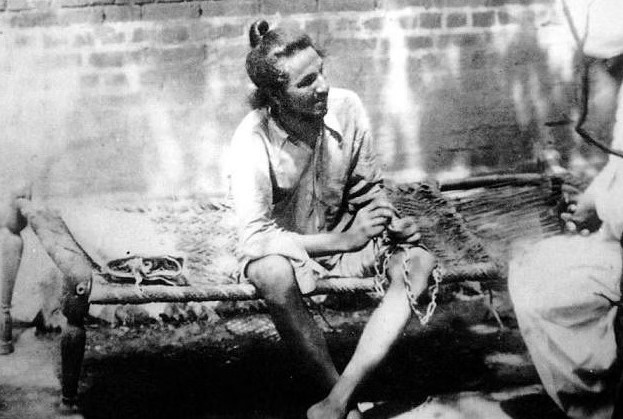

The attack on the Central Assembly Hall
Two bombs were thrown into the Assembly chamber from the public gallery by Bhagat Singh and Batukeshwar Dutt on April 8th, 1929. At least one member of the Assembly was injured by the bombings. They could have escaped the Assembly Hall after the chaos and confusion that ensued, but they stayed and chanted the popular catchphrase ‘Inquilab Zindabad!’. After that, Singh and Dutt were taken into custody and taken through a series of Delhi jails.
The trial by assembly, the sentence of imprisonment, and the execution
The trial began in the first week of June following a preliminary hearing in May. For causing explosions of a nature that could endanger life, unlawfully and maliciously, Singh and Dutt were sentenced to life in prison on June 12.
Bomb factories in Lahore and Saharanpur were set up by his associates Sukhdev, Kishori Lal, and Jai Gopal in 1929. The investigation into the murder of Saunders, the bombing of the Assembly, and the manufacture of the bombs were all connected as the investigation progressed.
Bhagat Singh, a political prisoner, and others noticed that European prisoners were treated differently from those from India. At the same time, they argued for equal access to books and a daily newspaper as well as equal access to food and clothing.
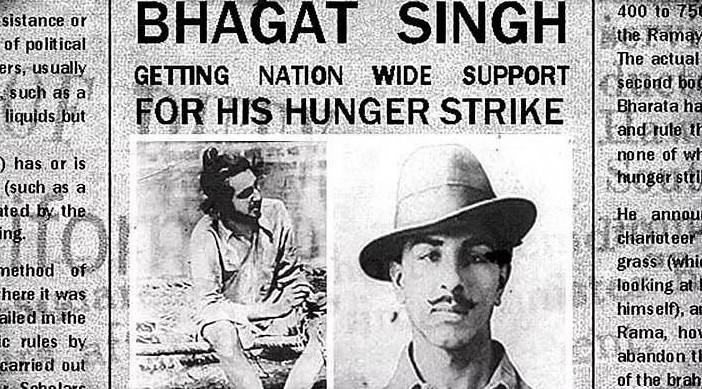

A hunger strike was staged by Singh and other prisoners. The government made numerous unsuccessful attempts to break the strike. The government decided to move forward with the Lahore Conspiracy Case after the hunger strike became a national sensation, and Singh was taken to Bostal Jail in Lahore and the trial began on July 10, 1929.
On March 23, 1931, Singh, Rajguru, and Sukhdev were executed in the Lahore Conspiracy Case at 7:30 p.m.
Legacy of Bhagat Singh
Several Indian revolutionaries were martyred at a young age, including Bhagat Singh. They were all in their early or mid-20s when they made the ultimate sacrifice. As a teenager, Bhagat Singh idolised Kartar Singh Sarabha, who was executed in 1915 at the age of 19. All of them deserve to be immortalised in our collective consciousness as bright young stars. How did Bhagat Singh rise to the top of the ranks? Why is he so revered and adored among the others?
A thousand campaigns have been launched with his photos. At every protest, his name is mentioned; there is no government or political party that doesn’t mention him during the election season. Even if you’ve never read his insightful writings or absorbed his thoughts, you can still admire this icon. This may be understandable, given that Bhagat Singh’s storey is so compelling. There is a lot more to Bhagat Singh than meets the eye because of the iconography that surrounds him, which can be both overwhelming and dazzling.
In the end, Bhagat Singh’s fight was not against colonial oppression, but rather against injustice and inequality in society. A culture of bomb and pistol is not the culture of revolution (inquilab). To us, revolution means changing the current state of affairs, which is founded on clear injustice,” he declared in a joint statement. The shallow and hollow idolization that has surrounded him for the past ninety years has not diminished our ability to see his social and political vision. Until we delve deeper into what lies behind Bhagat Singh’s ubiquitous, overwhelming visage, we will never have a full appreciation for him.
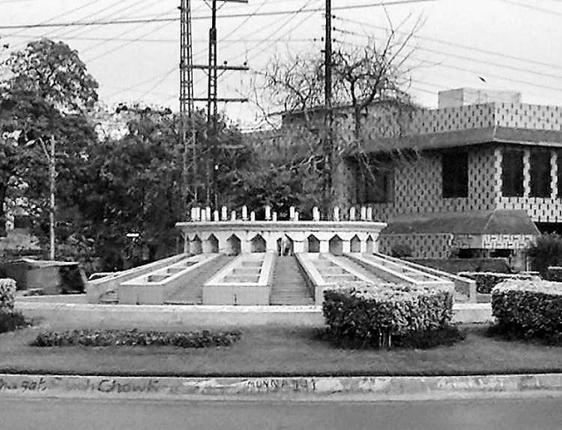

Bhagat Singh, who has been immortalised in his images for the past nine decades, believed strongly in the power and reach of the visual medium. Bhagat Singh always tried to draw the attention of the youth to the martyrs’ lives and deeds in his memoir ‘Amar Shaheedon Ki Yaadein.’
Trivia about Bhagat Singh
- Angered by the Jallianwala Bagh massacre, Bhagat Singh skipped school to pay his respects at its site. He was a talented actor in college, appearing in such productions as “Rana Pratap” and “Bharat-Durdasha.”
- Bhagat Singh fled to Kanpur from Punjab when his parents insisted he marry. As far as he knew, the British Raj in colonial India meant that his bride would be his death if he were to get married there. As a result, I’m no longer tempted by anything in this world.’ Finally, he joined the “Hindustan Socialist Republican Association” after this.
- From an early age, he was fascinated by Marxism and the revolutionary socialist movements led by Vladimir Lenin. In the words of Bhagat Singh: “They may kill me, but not my ideas. ‘They can break my bones, but they can’t break my spirit,’ I said.
- Instead of hanging him, Bhagat Singh suggested to the British, “they should shoot him,” but they ignored his suggestion. In his most recent letter, he made mention of it. It was in this letter that Bhagat Singh wrote, “Since I was detained during the war. Because of this, I cannot be sentenced to death by hanging. Let me be shot out of a cannon’s mouth. ” ” This demonstrates his courage and concern for the country.
- Bombs were thrown at the Central Legislative Assembly by Bhagat Singh and his associates. People are on their list of priorities. Low-grade explosives were used to make the bombs.
- His hunger strike occurred while he was imprisoned. It’s amazing that he managed to keep up with all of his obligations during this time, including singing, writing, and going to court on a daily basis.
- Inquilab Zindabad, a powerful slogan coined by Bhagat Singh, became the rallying cry for India’s armed resistance.
- On March 23, 1931, he was executed one hour early. Bhagat Singh is said to have smiled as he was hanged.
- Bhagat Singh was giggling out loud when his mother visited him in jail. When the jail officials saw this, they were taken aback by the person’s frank laughter in the face of such imminent death.
- On the advice of his parents, Bhagat Singh fled to Kanpur and joined the Hindustan Socialist Republican Association, saying that “my bride shall only be death” for him if he were to marry in slave India.
- Avenging the death of Lala Lajpat Rai, he and Sukhdev planned to kill Lahore police superintendent James Scott. However, the Assistant Superintendent of Police, John Saunders, was shot because he was mistaken for someone else.
- When the killing occurred, he decided to cover up his ethnicity by shaving his beard and cutting his hair short. He was able to flee Lahore to Calcutta on his own.
- “Inquilab Zindabad!” he and Batukeshwar Dutt chanted a year later, when they threw bombs at Delhi’s Central Assembly Hall. At this point, he did not resist arrest.
- The British learned of his involvement in the death of John Saunders a year earlier during his interrogation.
- Rather than defending himself, he used the occasion of his trial to advocate for India’s independence.
- According to legend, no judge was willing to oversee the execution. An honorary judge signed and oversaw the hanging after the original death warrants had expired.
- It’s said that Bhagat Singh walked to his death with a smile on his face, shouting “Down with British imperialism” as he went.
- Bhagat Singh grew up fantasising about fighting the British in the fields with guns he made himself.
- Bhagat participated in a protest at Gurudwara Nankana Sahib when he was just 14 years old against the killing of a large number of unarmed people.
- In college, he appeared in several plays, including Rana Pratap, Samrat Chandragupta, and Bharat Durdasha. He was an excellent actor. Ram Prasad Bismil and other revolutionaries who died as a result of the Kakori Conspiracy were used as examples of the power of drama to inspire a rebellion against the British by Singh, who purchased a magic lantern to show slides that enliven his speeches. An ambitious publicity stunt for the Hindustan Socialist Republican Association (HSRA) was his idea for their 1929 annual meeting.
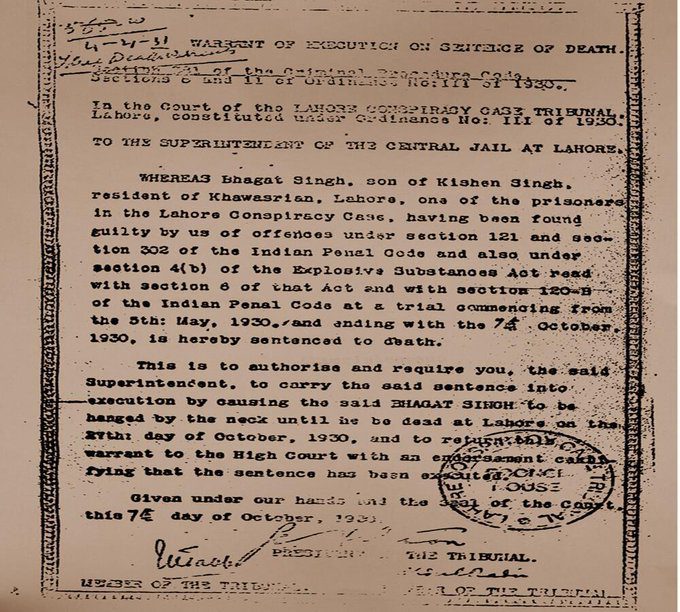

- Bhagat Singh disliked Gandhi’s non-violence philosophy. The Chauri Chaura incident in 1922 sparked Singh to join the Young Revolutionary Movement, which advocated for the overthrow of the British government in India through violence.
- “My life has been devoted to the noblest cause, that of the freedom of the country,” Singh wrote in a letter before fleeing to Kanpur. To put it another way, “there is nothing that can tempt me now.”
- The Hindu-Muslim riots following Gandhi’s disbandment of the Non-Cooperation Movement sparked Singh’s doubts about religion. How members of two groups who had been fighting the British together could now be at loggerheads over religious differences was beyond him. To help revolutionaries in their fight for freedom, Singh gave up his faith at this point and began reading the writings of atheist revolutionaries like Bakunin, Lenin, and Trotsky. When Singh was imprisoned in the Lahore Central Jail in 1930, he also wrote an essay entitled ‘Why I am an Atheist’
- Singh was a fantastic writer, to say the least. The Naujawan Bharat Sabha published low-cost pamphlets that slammed the British, and he wrote and edited Urdu and Punjabi newspapers from Amritsar, Punjab. The Punjab Hindi Sahitya Sammelan had set up an essay competition in 1923, and Singh won it by writing about the problems in Punjab. Veer Arjun newspaper in Delhi and the Kirti party’s journal were other publications he contributed to. Singh wrote a series of articles on anarchism in Kirti between May and September 1928. His writings were published under the pseudonyms Balwant, Ranjit, and Vidhrohi.
- To describe himself, Bhagat Singh coined “political prisoner” during his time in jail. When he was imprisoned, he made a point of standing up for his fellow inmates and demanding that they be provided with the basic necessities of life.


